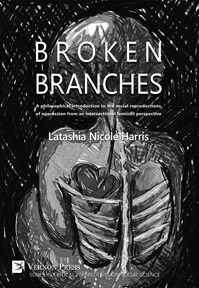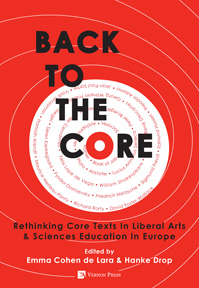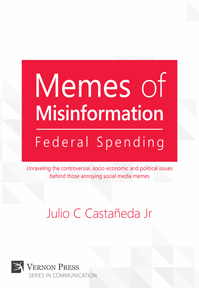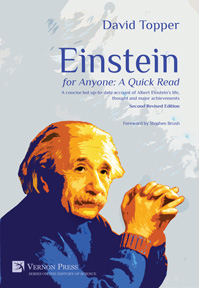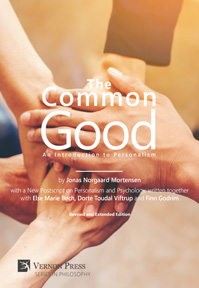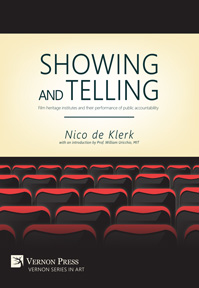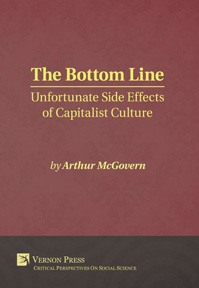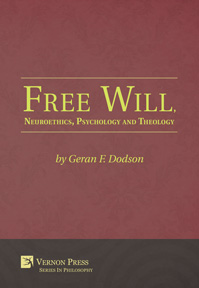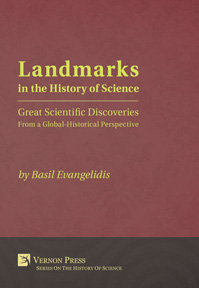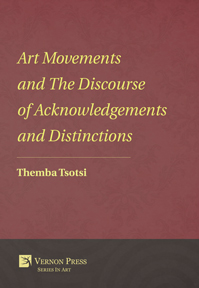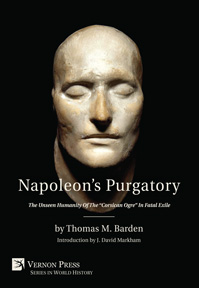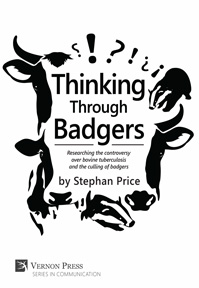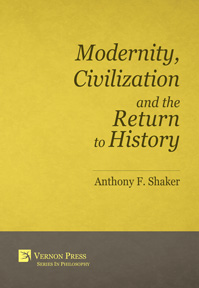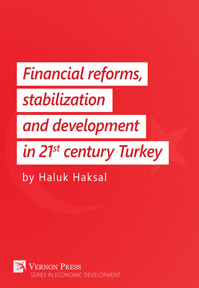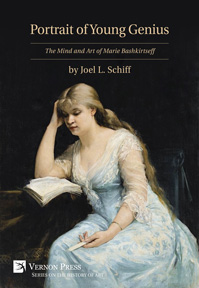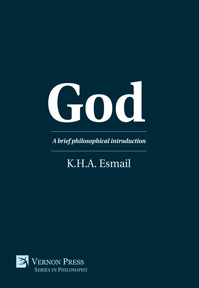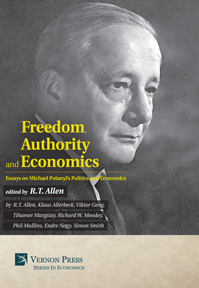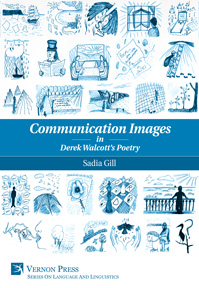Search
Browse
by Publication status
by Subject
Anthropology (26) Art (126) Business and Finance (27) Cognitive Science and Psychology (56) Communication and Journalism (49) Economics (63) Education (70) History (150) Human Geography (22) Interdisciplinary (43) Language and Linguistics (135) Law (16) Music Studies (19) Philosophy (162) Political Science and International Relations (104) Sociology (317) Statistics and Quantitative Methods (21)by Series
Series in Literary Studies (68) Series in Philosophy (59) Series in Education (54) Series in Sociology (45) Bridging Languages and Scholarship (33) Series in Politics (32) Series in World History (32) Series in Language and Linguistics (25) Series in Philosophy of Religion (22) Cognitive Science and Psychology (21) Series in American History (20) Series in Art (19) Critical Perspectives on Social Science (18) Series in Cinema and Culture (16) Series in Critical Media Studies (16) Curating and Interpreting Culture (15) Series on the History of Art (14) Economics (14) Series in Anthropology (13) Series in Business and Finance (13) Series in Music (12) Series in Communication (9) Series in Performing Arts (9) Philosophy of Personalism (8) Series in Law (8) Series on Climate Change and Society (8) Series in Economic Methodology (7) Women's Studies (7) Classics in Economics (6) Series in Economic Development (6) Philosophy of Forgiveness (5) Series in Built Environment (5) Series in Economic History (5) Series in Philosophy of Science (5) Series in Social Equality and Justice (5) Series on the History of Science (4) Serie En Estudios Literarios (3) Serie en Sociología (3) Series in Contemporary History (3) Series in Creative Writing Studies (3) Series in Design (3) The Interdisciplinary Built Environment (3) Serie en Comunicación y Medios (2) Serie en Historia (2) Serie en Música (2) Series in Heritage Studies (2) Series in Innovation Studies (2) Series in Philosophy of Race (2) Serie en Ciencias Políticas (1) Serie en Entorno Construido (1) Serie en Estudios Culturales (1) Serie en Filosofía (1) Serie en Filosofía de la Ciencia (1) Serie sobre Cambio Climático y Sociedad (1) Series in Classical Studies (1) Series in Economics of Technological Change (1) Series in Urban Studies (1)by Language
English Spanishby Author
Paris, a Concise Musical History
May 2017 / ISBN: 978-1-62273-255-5Availability: In stock
384pp. ¦ $59 £48 €55
Paris, the City of Light, is one of the most romantic cities in the world. The millions of visitors which flock to the French capital every year follow in the footsteps of countless artists, writers and composers who for centuries have been drawn to this magnificent city. Some composers, Chopin and Rossini among them, found success and contentment, and remained in Paris for the rest of their lives. But for others, Paris brought nothing but disappointment and disillusionment. Mozart, who came to Paris as a 22-year-old seeking a permanent position, was so bitter about the cavalier manner in which he was treated that he professed an aversion to all things French until the end of his days. Wagner was so upset by his treatment here that he once described Paris as "a pit into which the spirit of the nation has subsided." And yet he was drawn back to the city time and again. This book charts the musical history of Paris. It discusses the composer and musicians, both French and foreign, who were drawn here and the impact they made on the world of music, on this great city, and vice versa. It includes a wealth of biographical details, including where the artists lived and, where relevant, where they died and are buried. It also draws from and points to suitable scholarly literature, making it an accessible introduction to students of the musical history of Paris. The book also describes another feature which, if it did not enrich, most certainly enlivened Parisian musical life: The full-scale musical riot. The most notorious of these took place at the Theatre des Champs Elysées in 1913 at the premiere of Stravinsky’s ballet Le sacre du printemps. Less physical, but no less vociferous, was the reception accorded to Wagner’s Tannhäuser at the Opéra in 1860. Other composers who incurred the displeasure of Parisian audiences included Satie, Varese and Xenakis. These riots were not half-hearted affairs; police involvement was required and hospital casualty departments were kept busy. There are also chapters which discuss the musical history of the many theatres of Paris and the churches which played such an important part in the city’s musical past. The text is clear and accessible in order to appeal to both students and the general reader.
Broken Branches
A philosophical introduction to the social reproductions of oppression from an intersectional feminist perspective
Latashia Nicole Harris, University of Portland
Availability: In stock
192pp. ¦ $55 £48 €53
Broken Branches places a critical lens on the infrastructure, institutions, social processes and practices that govern our society. The text examines the ways that neoliberalism influences society and our lives across generations. The practice of colonialism is deconstructed, showing how this practice has been renamed, but holds steadfast to its original intention of cultivating institutionalized oppression that feeds social perception. The author exposes the ways that social perceptions, juxtaposed semantics, commonly accepted definitions, practices, rhetoric and propaganda create products of maintained systemic injustice when resistance is absent and desensitization is prevalent. Colonialism and its consequential social reproductions of oppression continue to traverse across land, body, and mind in individual as well as collective contexts. Broken Branches explores the tributaries of oppression but also highlights the source of oppression within the United States. The philosophical, intersectional and feminist approach of critical analysis lays the framework for further interrogation and utilizes the catalyst of historical precedence to initiate this introduction. The author implores the reader to take introspective steps towards understanding where one’s own complicity exists in oppression as well and addresses the cognitive dissonance we have become accustomed to in perpetuating oppression. Broken Branches offers suggestions on how to forge forward to create substantive and structural change that is not contingent on the dispossession and oppression of the marginalized so that the health and vitality of a few is sustained. Broken Branches encourages the practice of continuous inquiry and acknowledges that transformation is not possible without change. The author pushes for collectively empowered marginalized voices, operationalized pathways to inclusion, intersectional and equitable perspectives, and an increased investment in healing the trauma caused by the perpetuation of colonialism.
Back to the Core
Rethinking Core Texts in Liberal Arts & Sciences Education in Europe
Edited by
Emma Cohen de Lara, Amsterdam University College, Netherlands
and Hanke Drop, University of Applied Sciences Utrecht
Availability: In stock
420pp. ¦ $75 £65 €70
Whereas liberal arts and sciences education arguably has European roots, European universities have evolved over the last century to become advanced research institutions, mainly offering academic training in specialized disciplines. The Bologna process, started by the European Union in the late nineties, encouraged European institutions of higher education to broaden their curricula and to commit to undergraduate education with increased vigor. One of the results is that Europe is currently witnessing a proliferation of liberal arts and sciences colleges and broad bachelor degrees. This edited volume fills a gap in the literature by providing reflections on the recent developments in Europe with regard to higher education in the liberal arts and sciences. The first section includes reflections from either side of the Atlantic about the nature and aims of liberal arts and sciences education and the way in which it takes shape, or should take shape in European institutions of higher learning. The edited volume takes as a distinct approach to liberal arts and sciences education by focusing on the unique way in which core texts – i.e. classic texts from philosophical, historical, literary or cultural traditions involving “the best that has been written” – meet the challenges of modern higher education in general and in Europe in particular. This approach is manifested explicitly in the second section that focuses on how specific core texts promote the goals of liberal arts and sciences education, including the teaching methods, curricular reflections, and personal experiences of teaching core texts. The edited volume is based on a selection of papers presented at a conference held in Amsterdam, the Netherlands, in September 2015. It is meant to impart the passion that teachers and administrators share about developing the liberal arts and sciences in Europe with the help of core texts in order to provide students with a well-rounded, formative, and genuinely liberal education.
Memes of Misinformation: Federal Spending
Unraveling the controversial, socio-economic and political issues behind those annoying social media memes
March 2017 / ISBN: 978-1-62273-251-7Availability: In stock
184pp. ¦ $40 £32 €38
In this first installment of the Misinformation series, the author tackles complex socio-economic and political topics related to the economy of the United States, such as the federal budget, wasteful spending, the national debt, unemployment and social security. By breaking down each subject into layman’s terms, the author clearly and concisely presents, in an unbiased manner, the facts behind the fake news, half-truths and general misinformation from the annoying headlines and memes cluttering social media on these volatile subjects.
Einstein for Anyone: A Quick Read
A concise but up-to-date account of Albert Einstein's life, thought and major achievements
March 2017 / ISBN: 978-1-62273-257-9Availability: In stock
128pp. ¦ $30 £20 €28
This book seeks to fill a gap: the need for a very short book on Albert Einstein that gives a brief but up-to-date story of his life and thoughts, with a short and simple explanation of what he contributed to 20th century physics. Here is the compact story of this famous scientist, from the smiling contrarian in his grade school picture to the nonconformist adult who refused to groom his hair. There is a chapter on his habitually thorny relationships with women and close relatives: his first love, his two wives, his parents and his children – none of which was a painless union. The birth of an illegitimate daughter, the estrangement of his sons after the divorce from his first wife, his ever controlling mother – all had a profound psychological effect on Einstein’s personality. Another chapter focuses on the young Jew struggling with his self-identify, who in adulthood was unwaveringly committed to social justice and democratic principles that he believed were rooted in Jewish ethical values. It started with his early flirtation with Orthodox Judaism, only to be vehemently rejected later when he became a science-obsessed teenager. His exposure to latent and overt anti-Semitism when he moved to Germany in 1914 led to his subsequent espousal (with misgivings) of the Zionist movement. When he moved to the USA in 1933 fleeing Nazi Germany, he was confronted with the endemic racism against African-Americans, an issue he spoke-out boldly against, as a supporter of the burgeoning civil rights movement. This work ignited the ire of FBI Director J. Edgar Hoover, who had already opened a file on Einstein in 1932, because of his pacifist activities in Germany. When he moved to America, Hoover suspected him of being a Communist spy. Finally, there is the scientist who expressed his ideals through his radical ideas about the physical world, as he reworked our conceptions of space, time, and motion. The result was a new cosmic model of the universe that is still being developed further today. His commitment to an ordered and predictable universe was ultimately expressed in his final (but still unfulfilled) quest for a theory that unifies the forces of nature, what he called his unified field theory. Some non-scientific topics, not often found in biographies of Einstein (even the hefty tomes): • A serious consideration of his extensive ruminations on matters of politics and society. • His social efforts for the plight of Eastern European Jews after World War I, and the later work for refugees from Nazi Germany trying to immigrate to the USA. • A look at his close friendship with the African-American singer Paul Robeson, and others committed to civil rights. • The story of his acceptance and reception of an honorary degree from Lincoln University in May, 1946, the first all-black college in America. • His confrontation with the anti-Communist movement during the McCarthy era (especially Hoover and the FBI). • The key role the ideas of the 17th century Jewish philosopher Spinoza had on both Einstein’s theology and his scientific thinking. Some of the highlights of Einstein’s scientific pursuits found in this book: • A clear explanation, with helpful diagrams, of Einstein’s famous “thought experiments.” • The importance for Einstein of the interplay between theory and experiment in physics, as well as his practical side with real world technology. • His vacillation with and ultimate embrace of the role of abstract mathematics in his theory of relativity. • A clear explanation of the differences between Newton’s and Einstein’s ideas about gravity. • A non-technical account of the difference between Einstein’s and Bohr’s interpretations of quantum physics. • Perhaps the first elucidation for the layperson of Einstein’s obsession with and eventual abandonment of what he called Mach’s Principle. • How Einstein’s stubbornness (or chutzpah) both helped and hindered his endeavors in science. • A consideration of why he alone endlessly pursued his quest for a unified field theory. • The little known story of the Einstein-deHaas Effect. • The contrast in his later years between the public’s perception of Einstein the sage and icon of science with that of his fellow scientists, who generally saw him as an old fool chasing a pipedream. • Finally, the most recent confirmation of another of his predictions: the detection of gravitational waves, announced in February 2016.
The Common Good
An Introduction to Personalism
Edited by
Steffen Boeskov, University of Liverpool
and Leif E. Kristensen, Københavns Universitet
Availability: In stock
172pp. ¦ $45 £35 €42
Our traditional ways of thinking about politics and society are becoming obsolete. We need some new points of reference in order to re-imagine the possible character, growth, and functioning of our private and common life. Such re-imagination would imply doing away with every-man-for-himself individualism as well as consumption-makes-me-happy materialism and the-state-will-take-care-of-it passivity. There is an alternative: Personalism is a forgotten, yet golden perspective on humanity that seeks to describe what a human being is and to then draw the social consequences. Personalism builds upon the thinking of Martin Buber and Emmanuel Levinas, among others, and has been a source of inspiration for Martin Luther King, Desmond Tutu, and other important personalities in recent history. According to personalism, humans are relational and engaged and possess dignity. The person and the relationship amongst persons are the universal point of departure: Human beings have inherent dignity, and good relationships amongst humans are crucial for the good, engaged life and for a good society. Personalism has been greatly neglected in Western political thought. In this book, Jonas Norgaard Mortensen attempts to introduce personalism while simultaneously demonstrating its historical origins, acquainting the reader with its thinkers and those who have practiced it, and showing that personalism has a highly relevant contribution to make in the debate about today’s social and political developments.
Financial Management
A practical and accessible introduction for students and entrepreneurs
John Smeur, Windesheim University College, Netherlands
Availability: Discontinued
368pp. ¦ $45 £30 €35
This book introduces key concepts and methods in business financial management. It consists of two parts. Part one is structured around start-up investments and key financing decisions facing entrepreneurs during their first year in business. The instruments examined include the investment budget, financing plan, the opening balance sheet, financial planning for profits and liquidity, the closing balance sheet and a complete treatment of ratio analysis. Part two is about cost prices, budgeting and variance analysis, profit calculation methods and break-even point and, finally, calculations of the returns to alternative investment options. All of these subjects are treated in an accessible, stepwise manner and are accompanied with illuminating examples. The combination of theoretical rigor and simple explanations makes the present volume indispensable for both students and entrepreneurs.
Showing and Telling: Film heritage institutes and their performance of public accountability
Nico de Klerk, Ludwig Boltzmann Institute for History and Society, Austria
Availability: In stock
328pp. ¦ $50 £38 €45
Showing and Telling is the first academic work to explore how publicly funded film heritage institutes account for their mandate in their public activities. It does that by inspecting and evaluating public presentations and visitor information about these presentations. The research was done by juxtaposing two complementary approaches. The first is grounded in the author’s experience as a collection researcher and curator and makes a case for the richness of archival objects usually ignored for their lack of aesthetic qualities. The second is a survey of the public activities of 24 institutes worldwide, based on their websites, in February 2014; the latter constitutes a unique source. This original work uncovers the disconnect between the curatorial activities of these institutes and their missions. A central finding is that publicly funded film heritage institutes give their public an inadequate sense of cinema history. By and large they offer a mainstream-oriented repertoire of presentations, overwhelmingly consisting of feature fiction; they show a disproportionate amount of recent and new works, often through commercial distribution; their screenings consist of an unexplained melee of technological formats (sometimes substandard); and their presentations monotonously frame film as art, although their professed aesthetics are mostly of a cinephile nature and rest on received opinion. Specific materials, early cinema in particular, and specialist knowledge, both historical and methodological, are largely restricted to their network of peer communities. Wholesome transfer of full knowledge, in word and image, to the public is not a major concern. Showing and Telling concludes with recommendations for curatorial activities. Firstly, with a conceptual apparatus that allows a more complete understanding of film heritage and its histories. Secondly, with a plea for rethinking the institutes’ gatekeeper function and for developing more varied, imaginative, and informative public presentations, both on site and online, that reflect the range of their collections and their histories.
The Bottom Line: Unfortunate Side Effects of Capitalist Culture
Arthur McGovern, Nichols College
Availability: In stock
212pp. ¦ $50 £38 €45
This monograph explores the role of culture in modern societies and the side effects that result when that role is distorted. The basic premise of this book is that many of the dominant cultural characteristics of modern life, like the ideologies and values associated with materialism and consumer capitalism, are cultural phenomena with influences that are in many ways problematic and in some ways downright detrimental to our sustained societal well-being. I argue in this book that the globalized capitalist economic system has become increasingly efficient in terms of scale and scope, but has also become less humane in many regards; less connected to human needs and concerns. Of particular concern is the encroachment of economic interests into areas of human society that traditionally have been free from profit motives, or at least only minimally influenced by them; areas such as scientific research, the justice system, and even family relationships. I suggest that there is a slow but steady intrusion into these areas of human life that were once considered off-limits to naked economic incentives and calculations. This intrusion puts the idea of America as a free and democratic society increasingly at risk when private economic stakeholders meddle in the political and cultural areas of society in ever more insidious ways to further their own enrichment at the expense of the public. Furthermore, the vast capitalist economic system is in many ways increasingly disconnected or disembedded from the contexts and regulations of traditional social relations as in the past.
Free Will, Neuroethics, Psychology and Theology
Geran F. Dodson, University of North Georgia
Availability: In stock
170pp. ¦ $60 £50 €57
The topic of human free will has received more attention in the past several years due to the important discoveries of neuroscience but no consensus of opinion is evident in related disciplines. The traditional approach to understanding free will in philosophy employs conceptual analysis to determine whether humans have freedom of choice. Theology affirms that every person has free choice although God is somehow behind all human decisions. Evolutionary psychology points to human behavior as the product of biological processes and antecedent events. And neuroethics attempts to define what it means to be a thinking moral agent by investigating how neurons in the brain and chemical interactions combine to produce conscious actions. An assessment and evaluation of these various positions is given in light of the evidence. The issue of whether a person can be held morally responsible for their actions hinges on whether those actions originate from free will or are the result of determinism. Theology makes assumptions of the existence of an absolute deity that has a hand in human decision making, but there is no agreement regarding the nature of that intervention. Recent scientific discoveries confront traditionally held religious beliefs and necessitate the creation of a new theology and articles of faith.
Landmarks in the History of Science
Great Scientific Discoveries From a Global-Historical Perspective
February 2017 / ISBN: 978-1-62273-200-5Availability: In stock
204pp. ¦ $50 £38 €45
Landmarks in the History of Science is a concise history of science from a global and macro-historical standpoint. It is an account of grand theoretical revolutions, such as heliocentrism, atomism, and relativity. But, more importantly, it is also a story of the methodological transitions to the experimental, mathematical, constructivist and instrumental practices of science. It begins with Ancient Greek science, as one of the first self-conscious, comprehensive and well-documented scientific endeavors at the global level. The numerous contributions of the Greeks, in philosophy, mathematics, geometry, geography and astronomy, momentous as they were, were fruits of leisure rather than industry. It then examines the history of science in China and China’s exchanges with India and Islam. A systematic and collaborative scientific effort is the hallmark of Chinese science. The contributions of the Chinese in medicine, printing, manufacturing and navigation invariably predate and outshine those of western contemporaries. Attention then shifts to the age of oceanic discoveries, which created the inexorable presuppositions for the genesis of global trade and a world system. From the inner organs of the organisms to the outer regions of Earth, Renaissance science was ubiquitous. The importance of inter-cultural scientific syncretism is highlighted, with the Iberian Peninsula as meeting point and crossroad of mutual affection between Arab, Jewish and European culture. Discoveries and inventions in metallurgy, electromagnetism and the science of petroleum set the scientific basis for the industrial revolution. The logic of the industrial revolution dictates developments in information technologies that culminate with the invention of modern computers. A dedicated chapter on the history of modern scientific conceptions of the universe showcases the subtle links in the fabric of seminal ideas in physics and astronomy. The book concludes with some reflections on the relationship between philosophy and the history of science. Following Kuhn and Latour, this discussion centers on the characteristics of continuities, ruptures and paradigmatic transitions in science.
Art Movements and The Discourse of Acknowledgements and Distinctions
March 2017 / ISBN: 978-1-62273-060-5Availability: In stock
184pp. ¦ $30 £25 €28
This is a work of critical theory in the deconstructionist tradition. It investigates the impact and role of visual art practice in cultural dispensation. Its central argument is that conceptions of ‘leadership’ and of ‘being a subject’ (or subjugation) play a formative role in the manner with which cultural ideas are appropriated and spread out in organic interactions within the community. The arguments advanced in this work demonstrate that leadership conceptions are disseminated as ‘signs’ (a conceptual term for how ideas and their significance are understood in the context of cultural dispensation) and that signs have historical roots and connotations. Using deconstructionist techniques like différance, this work concretises the critical in the discourse which states that ‘signs’ in the cultural dispensation are in constant interaction with each other in terms of defining their historic, epistemic and contemporary ‘meaning’. The Discourse of Acknowledgements and Distinctions introduces three concepts that account for themselves through the infinite propensities of social contexts and the ‘signs’ that anchor them for referral. These are the notions of Cerebrinity, Hysteridence and Remembrance. The use of psychoanalysis – and of the perspectives of Kristeva, Jung and Freud - distinguishes this book from other works of critical theory that deal with art and art movements. The book aims to illuminate on the propensity of the community to participate in its own subjugation in the context of Modernity. It is concise and incorporates critical theory perspectives by writers like Baudrillard, Lyotard, Kristeva and Spivak. It can be appreciated by art students interested in the intersection between visual art, critical theory and psychoanalysis.
Napoleon’s Purgatory
The Unseen Humanity of the “Corsican Ogre” in Fatal Exile (with an introduction by J. David Markham)
Thomas M. Barden, Fellow in the International Napoleonic Society
Availability: In stock
334pp. ¦ $55 £44 €50
Napoleon’s Purgatory is a work portraying the human side of Napoleon as revealed by those who shared his exile on the island of St. Helena. Through the diaries and journals of the Emperor’s servants, generals, and companions come the stories of Napoleon’s tender love for children, his captivating sense of humor, his eternal love for Josephine, and his agonizing death. Napoleon Bonaparte was sent by the British to the remote island of St. Helena where he could not escape. What followed were six excruciating years of loneliness and depression, mixed with frolicking play with the island’s children, a battle of wills with his British captor, an exploration of his lapsed Catholic faith, and the complex relationship with the members of his entourage. This time in exile was akin to time served in Purgatory for Napoleon. His humanity, suffering, joy in the laughter of children, and longing for Josephine are captured vividly in this work through the detailed use of primary sources written by those who were there. While many considered Napoleon Bonaparte the “Corsican Ogre” for the wars he waged across Europe, he was anything but during his exile on St. Helena.
Thinking Through Badgers
Researching the controversy over bovine tuberculosis and the culling of badgers
Stephan Price, University of Exeter
Availability: In stock
334pp. ¦ $60 £48 €55
Bovine tuberculosis is seriously damaging the UK dairy and beef industry. Many farmers believe culling badgers must be part of the solution, but in 2013 a record 300,000 people signed a Downing Street petition asking the government to stop planned culls of badgers in Somerset and Gloucestershire, fuelling media controversy and signalling the beginning of a social conflict that was acted out in studios, streets, fields and village halls across England. The four-year trial culls, which began that year, aimed to establish that culling was a viable way of tackling the disease, but the widely divergent experiences and values of policy-makers, farming, conservation and animal welfare supporters means that decades of science on the disease in badgers and the effects of culling has not helped resolve the dispute. Reporting on original, UK research council-funded social science, this book takes on the challenge of understanding the contrasting views involved. Listening carefully to what the different protagonists have to say, the book unpicks the way science is interpreted to sustain differing conclusions, and considers how social science thinking could contribute. The book develops a critical perspective on the increasingly important literature influenced by new materialism, the social science response to the Science Wars, and explores the extent to which a social movement around opposition to the culls is emerging. In approachable prose, this access-all-areas account describes the struggle to develop understanding through the messy process of research and the difficulties of scientific analysis and philosophical thought. As such, it provides a valuable resource for both research practitioners and teachers within the social sciences, as well as an accessible way for biological scientists, conservationists and farmers to reflect on the issues around the management of disease in livestock and wildlife.
Modernity, Civilization and the Return to History
January 2017 / ISBN: 978-1-62273-184-8Availability: In stock
586pp. ¦ $80 £68 €77
The modern concept and study of civilization have their roots, not in western Europe, but in the spirit of scientific investigation associated with a self-conscious Islamicate civilization. What we call modernity cannot be fathomed without this historical connection. We owe every major branch of science known today to the broad tradition of systematic inquiry that belongs to a “region of being”—as Heidegger would say—whose theoretical, practical and institutional dimensions the philosophy of that civilization played an unprecedented role in creating. This book focuses primarily on the philosophical underpinnings of questions relating to civilization, personhood and identity. Contemporary society and thinking in western Europe introduced new elements to these questions that have altered how collective and personal identities are conceived and experienced. In the age of “globalization,” expressions of identity (individual, social and cultural) survive precariously outside their former boundaries, just when humanity faces perhaps its greatest challenges—environmental degradation, policy inertia, interstate bellicosity, and a growing culture of tribalism. Yet, the world has been globalized for at least a millennium, a fact dimmed by the threadbare but still widespread belief that modernity is a product of something called the West. One is thus justified in asking, as many people do today, if humanity has not lost its initiative. This is more a philosophical than an empirical question. There can be no initiative without the human agency that flows from identity and personhood—i.e., the way we, the acting subject, live and deliberate about our affairs. Given the heavy scrutiny under which the modern concept of identity has come, Dr. Shaker has dug deeper, bringing to bear a wealth of original sources from both German thought and Ḥikmah (Islamicate philosophy), the latter based on material previously unavailable to scholars. Posing the age-old question of identity anew in the light of these two traditions, whose special historical roles are assured, may help clear the confusion surrounding modernity and, hopefully, our place in human civilization. Proximity to Scholasticism, and therefore Islamicate philosophy, lent German thought up to Heidegger a unique ability to dialogue with other thought traditions. Two fecund elements common to Heidegger, Qūnawī and Mullā Ṣadrā are of special importance: Logos (utterance, speech) as the structural embodiment at once of the primary meaning (essential reality) of a thing and of divine manifestation; and the idea of unity-in-difference, which Ṣadrā finally formulated as the substantial movement of existence. But behind this complexity is the abiding question of who Man is, which cannot be answered by theory alone. Heidegger, who occupies a good portion of this study, questioned the modern ontology at a time of social collapse and deep spiritual crisis not unlike ours. Yet, that period also saw the greatest breakthroughs in modern physics and social science. The concluding chapters take up, more specifically, identity renewal in Western literature and Muslim “reformism.” The renewal theme reflects a point of convergence between the Eurocentric worldview, in which modernism has its secular aesthetics roots, and a current originating in Ibn Taymiyyah’s reductionist epistemology and skeptical fundamentalism. It expresses a hopeless longing for origin in a historically pristine “golden age,” an obvious deformation of philosophy’s millennial concern with the commanding, creative oneness of the Being of beings.
Financial reforms, stabilization and development in 21st-century Turkey
Haluk Haksal, University of Geneva, Switzerland
Availability: In stock
486pp. ¦ $60 £48 €55
The central argument of this book is that while central bank independence can contribute to stabilization, inflation-targeting monetary policy is quite powerless in promoting economic development. The basic message is simple: Policy makers should not strive to achieve price stability at any cost, as stability in product markets does not necessarily translate into economic development. The recent experience of Turkey is illuminating and other developing countries, in particular those using inflation targeting monetary policy framework, can draw useful lessons from this experience. Early chapters summarize the deregulation process from 1980 to 2001. The Turkish Central Bank is placed at the center of the analysis as monetary policies have a significant impact both on stability and development. Although the 1994 and 2001 financial crises have been extensively studied elsewhere, they are nevertheless summarized to underscore the importance of central bank independence. Later chapters investigate the impact of an independent central bank on stabilization and development from 2001 onwards. Upon visiting the Turkish Central Bank's website, readers are greeted with the following statement: "The primary objective of the Bank is to achieve and maintain price stability." By the end of this book the reader should be able to assess the relative merits of a monetary policy that focuses on price stability, versus an alternative where price stability is accompanied by other objectives targeting development, for instance, monitoring also unemployment rates, which would undermine its independence to some degree. The study aims to provide a perspective on the need for such an alternative in line also with the vision of some international agencies on development, such as the UNCTAD and the ILO. This is the first book-length study examining the financial reforms Turkey undertook in its path towards EU accession. This unique work will be of interest to economists and other experts in financial history, (de)regulation, institutional economics and economic development, as well as a broad range of scholars interested in the dramatic transformation of Turkey's economy and society in the 21st century.
Portrait of Young Genius – The Mind and Art of Marie Bashkirtseff
December 2016 / ISBN: 978-1-62273-171-8Availability: In stock
304pp. [Color] ¦ $85 £68 €80
Marie Bashkirtseff was of one of the most extraordinary women of the 19th century. Her Journal (originally comprising some 20,000 hand-written pages but pared down to a few hundred for publication) was a cause célèbre after her death and continues to be an inspiration to the Women’s Movement to this day. It also inspired such great writers as Anaïs Nin and Katherine Mansfield among many others. Born into an aristocratic family in a village in Ukraine the family soon settled in France, first in Nice and later in Paris. Taught entirely by tutors Marie spoke multiple languages, played numerous musical instruments and longed for a singing career on the stage. An illness that affected her throat made her change course and she took up painting for which she had a latent talent. As a student at the Académie Julian in Paris she was soon exhibiting at the annual Paris Salon, the premier venue for artists. But it was her personality that makes Marie Bashkirtseff such an exceptional individual. At a very young age she was already exhibiting in her Journal the thoughts of a learned philosopher, wrestling with the nature of God, the position of women in society, the politics of men. Having contracted tuberculosis in early childhood she ceaselessly strove to shrug it off in her quest to achieve greatness. In the end, a great tragedy unfolds. The book is somewhat unique in format. The first part is a biographical section that describes Marie’s unusual and fascinating life. Then a second section, consists of a single Journal excerpt (in English translation from the original French) on each left-hand page, juxtaposed with one of her outstanding works of art on the facing page. In this manner, we learn about her remarkable life and tribulations, enter her restive and brilliant mind via her Journal, as well as appreciate her exceptionally fine works as an artist.
God: A brief philosophical introduction
K.H.A. Esmail, University of Cambridge
Availability: In stock
290pp. ¦ $60 £49 €55
This is a clear and original investigation of God's nature and existence. First of all, it considers two of God’s traditional properties: being all-knowing and being all-powerful. It argues he cannot possess these properties. But, it argues this is in accord with him being worthy of worship. Secondly, it introduces the notion of evil being “overridden”. It argues he has to bring about other free living things and it is plausible they have to be liable to experience evil due to their conditions. But, it argues the evil in this world is “overridden”. Thirdly, it considers the principal arguments for the claim he does not exist. (They refer to the evil in the world.) It argues they do not establish sufficient grounds for this claim. Finally, it considers some well-known arguments for the claim he exists. It argues they face difficulties. It sets out other arguments. It covers as a whole the principal parts of the Philosophy of Religion. It unifies these parts to a significant degree. It proceeds regularly by way of formal and clear arguments. These arguments are frequently original. It will be of interest to advanced students and specialists in Philosophy, Religious Studies and Theology. Given its explanation of key terms, its jargon-free language, its clarity and brevity.... , it will be of interest to others, too.
Freedom, Authority and Economics: Essays on Michael Polanyi's Politics and Economics
Edited by
R. T. Allen
Availability: In stock
188pp. ¦ $60 £48 €55
This edited volume of original contributions deals with the economic and political thought of Michael Polanyi. Requiring little prior knowledge of Polanyi, this volume further develops a somewhat neglected side of Polanyi's work. In particular it examines the 'tacit integration', of subsidiary details into focal objects or actions as central to all knowing and action. It traces ontological counterparts in the structures of comprehensive entities and complex actions, and a multi-level universe in which lower levels have their boundary conditions, the extents to which they apply, determined by those of the next higher level, whilst each possessing its own laws or operative principles. This schema of 'dual control' preserves the reality and relative autonomy of each level, and its interactions with others, against the various reductions. The essays in this volume also employ and develop important additional concepts and distinctions such as: 'corporate' and 'spontaneous' order; 'public' and 'private' liberties; 'general' and 'specific authority'; and 'moral inversion'; which, as the essays show, are necessary for understanding and maintaining a free society and the freedom of institutions within it. Among the topics treated with them are: more of the prerequisites of freedom in public liberties dedicated to principles and transcendent values; totalitarianism and society as spontaneous order; the balance of general and specific authority in society and particular institutions; reductionism, totalitarianism and consumption in consumer societies, as moral inversions; the mutual interactions of economics and politics as distinct and autonomous but interacting levels; the sociological aspects of economics; and Polanyi's own contributions to sociology. Although, as indicated, Polanyi has his special terms, the essays in this volume, like his works, give them meaning with concrete examples and so avoid merely shuffling a mass of abstractions. Together the essays show that his work is a rich seam of ideas and inspiration for yet further extension and application.
Communication Images in Derek Walcott's Poetry
October 2016 / ISBN: 978-1-62273-132-9Availability: In stock
326pp. ¦ $75 £65 €70
This book investigates the potential purpose of recurrent communication images in the poetry of Derek Walcott. The recipient of the Nobel Prize for literature in 1992, Walcott is one of the most important postcolonial poets of the 20th century. His poetry delves into the dynamics of Caribbean marginalization and seeks to safeguard the paradigms characteristic of his island home. Several major studies have examined themes in his poetry but the images of communication in his poetics have not been explored. This book examines Walcott’s poetry expressions that the poet brings into play in order to demonstrate the relevance of the Caribbean in the contemporary world—firstly through a study of communication imagery, and secondly through an examination of the conclusions he reaches through these means. The quantitative chart demonstrates that Walcott is especially reliant upon images of communication from the 1980s. Extensive textual analysis indicates that the place and contextual meaning of communication imagery, for example, page mirrors the historical plight of the Caribbean region; likewise, line expresses an identity deficit. Finally, this book validates that Walcott’s extensive use of communication imagery in his poetry contributes to a fluid notion of self that embraces multiculturalism while maintaining the imaginary intact.


